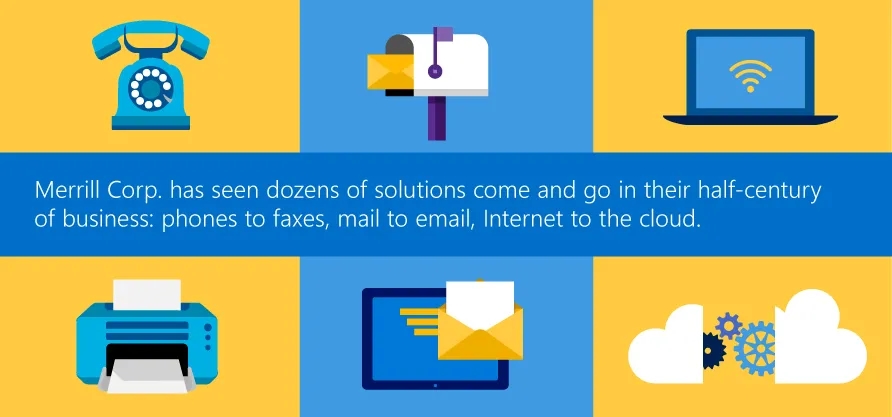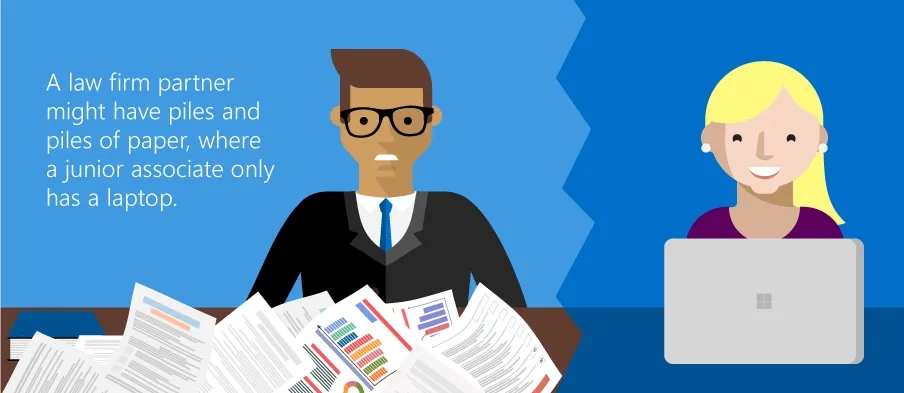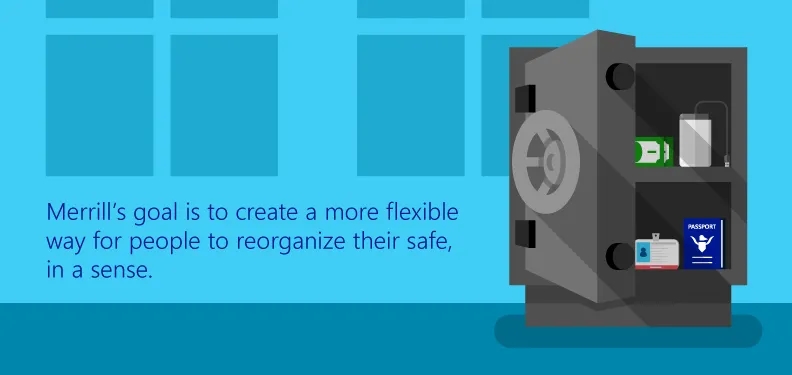
How Merrill Corp. Delivers Secure Services with Cloud Technology
| Engaging customers, Empowering Employees, Optimizing Operations, Transforming Product |
In recent years, a new type of business opportunity has emerged in the financial industry for sharing sensitive information, bringing with it exciting ways to engage more fully with customers. Leveraging their hallmark customer-centric approach, Merrill Corp. began a fundamental shift in the way customers engage with their products, creating new solutions – and meaningful user experiences — enabled by leading technologies.
From its origins as a financial printer nearly 50 years ago, Merrill has evolved to help firms globally securely protect, share and collaborate on their most sensitive and confidential content. Its industry-leading virtual data room, Merrill DataSite, ensures the right information is shared with the right people, leading to successful mergers and acquisitions. Merrill helps create and file initial public offering documents, as well as periodic financial disclosures required by the U.S. Securities & Exchange Commission and other global regulatory bodies.
Transformation to a Unified Process
Merrill had the vision of creating a single platform that could expand over time to accommodate several different use cases for secure content sharing. Rather than needing to work with several providers, Merrill’s customers could upload content once, and use it for a variety of purposes at different times, while never compromising security.
Merrill’s digital transformation began in the latter half of 2015; and, although it appears at first glance to have happened quickly, from within the walls of Merrill there were challenges that made the company stronger and more resilient than ever.

The latest technology advances have allowed Merrill Corp. to take advantage of opportunities in the market and improve capabilities. Further, during this period of transformation, Merrill maintained focus on its customer-centric approach, and relied on the strength of their highly-trained service professionals to keep them on the map through their period of growth and development.
A roadblock to achieving the vision was the siloed way in which Merrill had managed its business. Each of its units was organized independently, each with its own strategies, products, and systems. Because of the fragmented structure, a single document could often be stored in four different repositories within Merrill alone. Different technology stacks leveraged competing solutions within the same company and a heavy infrastructure made it difficult to optimize performance and reliability. Externally, Merrill wasn’t presenting itself as a unified company, so customers didn’t understand its full set of capabilities.
Ultimately, understanding priorities and being able to break away from traditional SLA turn-around times was critical to their success. Because of the evolving nature of architectures and designs, by the time Merrill got to a request, there might be new information that effectively changed the request or could potentially make it obsolete.
“Back then, the risk was “how well can I respond at 2 am when I’ve been woken up by the pager?” explains Eric Schroeder, Director of Cloud Infrastructure.Changing Perceptions
With all of these pain points, Merrill had the foresight and vision to know that they would need to make some big changes to stay competitive in the fierce financial services market of the future. Last year, the company relaunched their brand, tying all the groups together under the “Merrill Corporation” identity. The company effectively transformed itself from a waterfall environment to an agile environment, and as a result, the rate of growth has been tremendous. For Merrill, the journey has meant new talent, new process, new technologies and a new way of thinking.Creating a customer-driven process
While the new organization is technology based, it remains also heavily customer-focused, viewing every customer’s need with a different lens. A law firm partner might have piles and piles of paper, where a junior associate only has a laptop. Millennials are typically more comfortable with technology, while buyers tend to be more comfortable with traditional workflow processes.
Chief Product Officer, Thomas Fredell explains, “What we found over time is that the needs of our customers have really shifted away from the traditional printing much more towards electronic mechanisms that allow them to communicate together more effectively, to share information in a secure way, and to get their most sensitive transactions – their most sensitive regulatory information – distributed communication done. Our identity has been changing.”
Merrill has embraced a fundamental shift in thinking that allows the company to use back-end research tools without losing the warmth of human interactions. Throughout its development processes, Merrill also uses quantitative and qualitative research that includes one-on-one and team interviews, online usability sessions, and real-time observations. In a single year alone, Merrill conducted more than 680 individual research sessions with customers, 85% of which were face-to-face. This was a dramatic increase from the 45 sessions per year it had conducted previously. Because of this customer-driven product methodology, Merrill has gained a more comprehensive understanding of its ecosystem, use cases, opportunities, solutions, and above all, their customer needs.

Because of this high level of engagement, the company can put out a product, have its customers use it, and then provide feedback about the problems they’re solving. Engineers then make changes based on that feedback and reintroduce it, redesigned based on their experiences. As such, he desire to deliver the best customer experience is what drives their processes.
“We want to be a utility for our customers—something they don’t think about, says Head of Global Product Management, Christian Idiodi. Everything we do supports a business process: raising money, buying or selling a company… Making it easy to use is foundational to our vision.”Harnessing the Power of a Single Platform
The team at Merrill is seeing results, without a doubt. When they first began using the cloud in early 2016, it wasn’t necessarily a ‘transformation.’ They simply took an application that had been running in an on-premises stack and got it working in Azure. That process took about three months, but it allowed them to break into a new market. Once this initial step was taken, there was no stopping Merrill on its journey of digital transformation. “The collaborative technologies have allowed us to bring a total solution to our customer, rather than just one end point or one off solutions,” describes Chief Operating Officer, Rod Johnson.

With Azure, Merrill Corp. can now harness the power of a single platform to support the lifecycle of a financial document, and about 5,000 mergers and acquisitions transactions every year. That includes compliance and financial documents that require highly specialized care and attention. It’s the reason they are creating a secure repository. Christian explains its design as the difference between a filing cabinet and a safe. “You’ve got filing cabinets, but you need a safe for your passports and most sensitive documents.” Merrill’s goal is to create a more flexible way for their customers to reorganize their safe, in a sense.
Understanding the processes their customers use every day to raise capital has been key for Merrill’s product team. Every product brought to market has been validated early and often throughout the process.
The biggest difference between Azure and other cloud platforms is in its platform as a service (PaaS) features. “We’ll look back in a year, and think about how slow things are now,” Schroeder says. Merrill already runs 20 times faster than they did just eight months ago. “When I hear people talk about cloud just being somebody else’s datacenter I think they’re missing the point, or they’re working with the wrong partner, he explains. “They’re missing the boat. And ‘the boat’ in transformation is the ability to truly respond to your customers quickly and try something new and let it fail quickly without having invested a whole lot in it.”
Although Merrill still uses the IaaS features of Azure, its process is completely different than it was eight months ago. With the old legacy systems, they pushed out code every five weeks. At present, new code is released daily.
“We are introducing new tools in how we work, communicate, and collaborate,” says Christian. “We’ve gone from a traditional financial printer model to really this metamorphosis into a platform company.”
Johnson agrees, “In the past, our job was basically to process documents. Today, with the collaborative technologies that we have, we can bring our expertise and our knowledge to the table and help our customers in a way that is much more valuable than just processing documents for them. We can consult with them, we can advise them, and, using the technology, they can be much more efficient in the way they get their work done.”
Leveraging Partnerships for Greater Problem Solving
Role-based access control, and other things Azure is doing and what others have built on Azure to solve problems have undoubtedly helped to accelerate Merrill’s road map. Tapping into the technology, security, and expertise of its partners to solve problems opens Merrill Corp. up to a larger ecosystem and allows other companies to leverage its platform to solve their own problems, too.
Further, Merrill itself changed how it works. New partnerships were formed within the company, and a new way to communicate and drive requests back and forth emerged. It changed the workflow almost entirely. “We used to have silos of information that were created and recreated and recreated again, and now, with some of the collaborative tools of digital transformation, we can share data together; we can collaborate on data in a way that wasn’t possible,” Johnson says. His team works closely with other teams in product development, project management and security, all of which actively participate in planning meetings.
These changes are indicators of the massive culture shift that has taken place within the walls of Merrill Corporation. Eric Schroeder’s team scrapped the service catalog, and now everyone uses the same tools for workflow and works in the same sprint cadence. His risk assessment has changed from worrying whether he’ll have the answer at 2 a.m., to ensuring he’s done his due diligence, and whether the new tech is filling a warranted change. According to Schroeder, the most significant difference in how Merrill Corp. worked in the past and where they’re headed is that as a whole it’s changed its thinking from “What can Merrill do?” to “What does Microsoft have that we can leverage?”
It’s a mindset on which the leadership team philosophically aligns. “We use a lot of tools for our customers to consume as a part of our service,” Chief Technology Officer, Brad Smuland says. “That’s based on Microsoft. Part of what we offer is Word and Excel-based products, and there’s a natural ability to take those desktop environments and connect them to the cloud-base site and really have a well-oiled ecosystem.”
From lawyers, bankers, and investors to enterprise corporations, Merrill’s customers create documents, collaborate on them, review, make changes, manage approvals, and then file or distribute those documents. Working within Office 365, and collaborating online allows the company to quickly provide tremendous value without disrupting the tools and the comfort they have with Microsoft.
Looking to the Future
The leadership team at Merrill recognizes that the pace of innovation is accelerating, and acknowledges that speed and agility are key to their company’s future. Things people only imagined—machine learning, data science—are becoming more common. To win and be different, Merrill’s leadership team realizes that they need an ostensible platform that is open and flexible enough to provide value. Forward vision can’t be focused too much on the technology, but instead must be crafted around capabilities, knowing that the underlying systems can change.
Their key priorities now are bringing in the right talent, approaching and solving problems in the right way, and partnering with others who can provide a competitive advantage. Merrill Corp’s leadership team has been very transparent about its overall vision, rolling out company-wide demos of all releases, and engaging with the entire organization. “There are so many things that Microsoft does that we can leverage, so that we can focus on what we do best,” says Christian.
Related Content
- Explore more amazing Real Stories of Digital Transformation
- Download Merrill Corp Executive Slide




